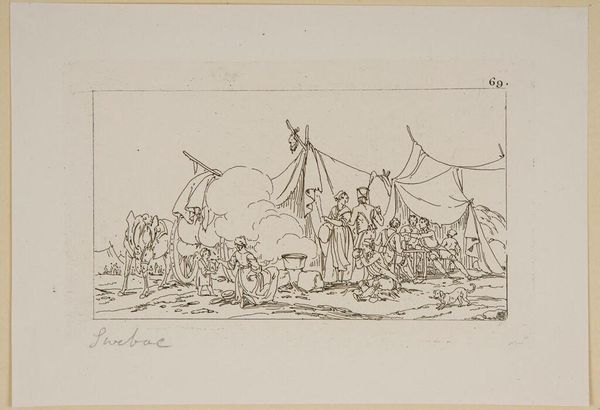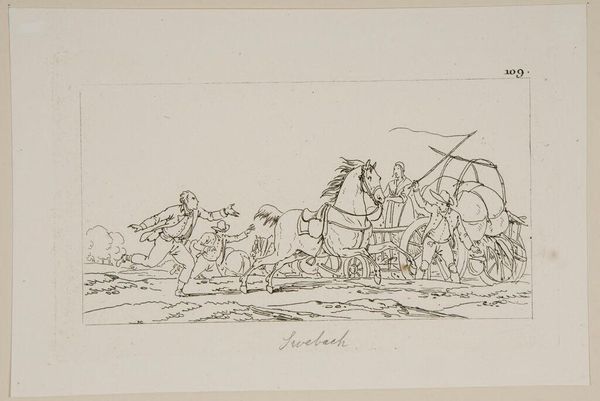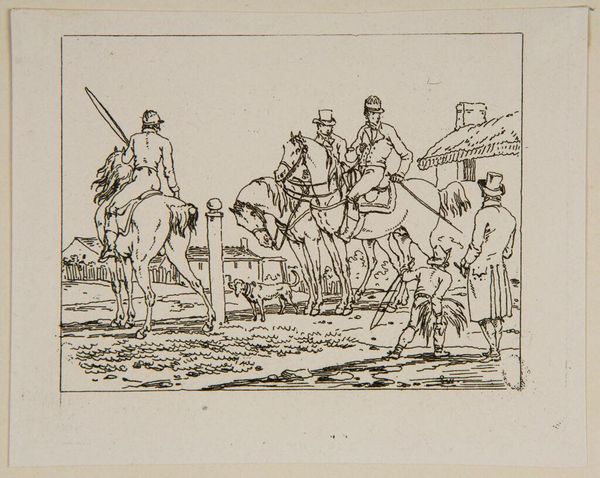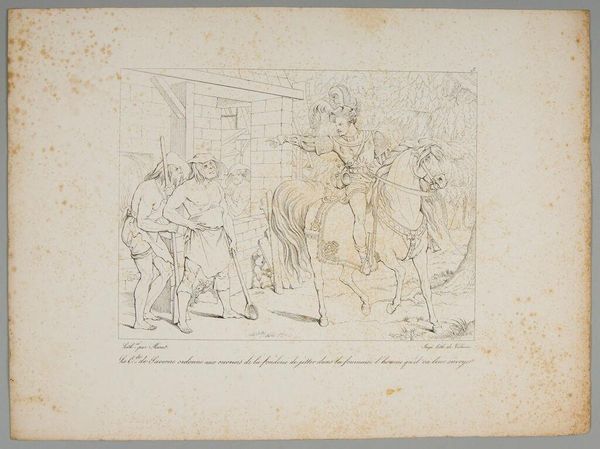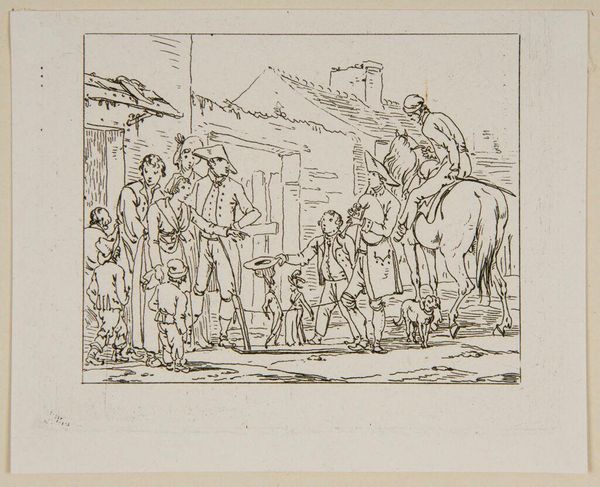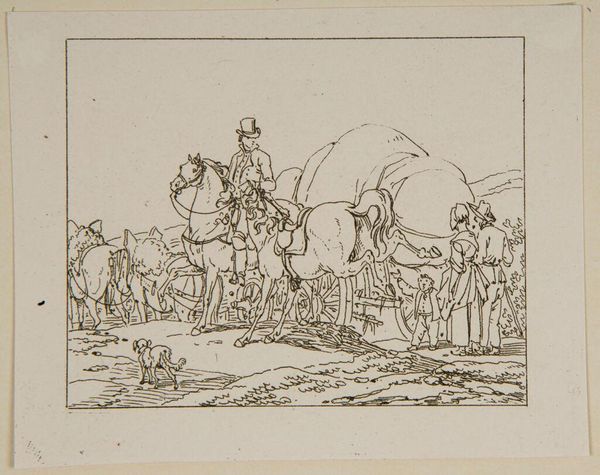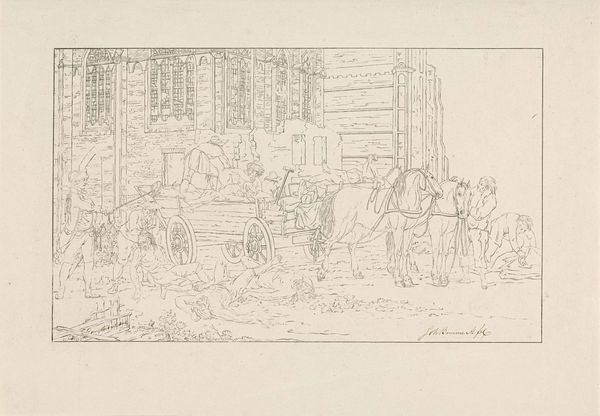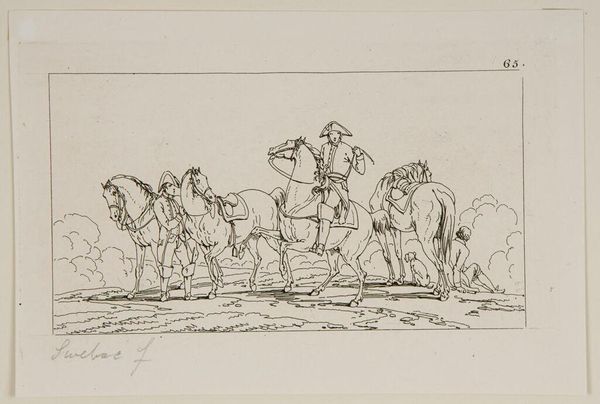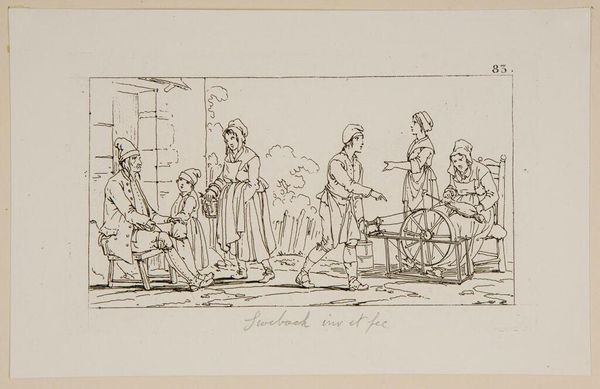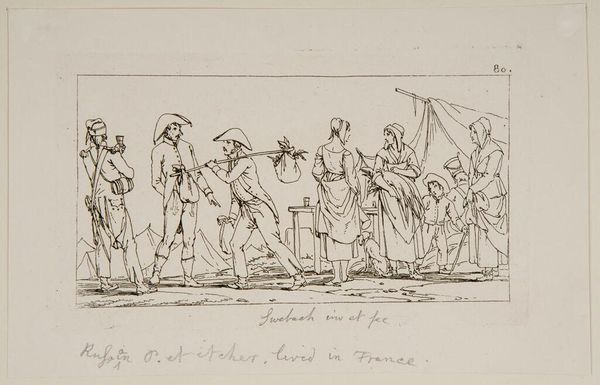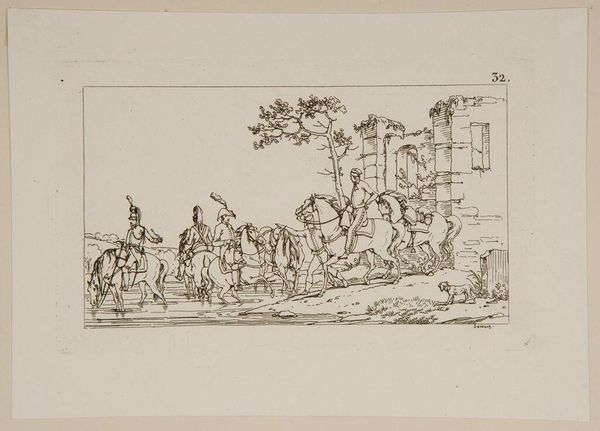
Copyright: CC0 1.0
Editor: This is "Plate XLIX" by Jacques-Francois-Joseph Swebach at the Harvard Art Museums. It depicts a scene with soldiers and civilians. What strikes me is the clear hierarchy in the composition. How should we interpret this power dynamic? Curator: It's crucial to consider the social structures of the time. This piece likely reflects the unequal power dynamics of military occupation. Notice how the central figures are the mounted soldier and the supplicating civilians. This is not simply a depiction of everyday life; it reinforces existing hierarchies. Editor: So, it's not just a snapshot, but a commentary on authority? Curator: Precisely. Swebach, consciously or unconsciously, illustrates how power is performed and negotiated, highlighting the vulnerability of the civilian population in the face of military force. It makes you question the normalized violence of such encounters. Editor: That gives me a lot to think about. Curator: Indeed, art often functions as a mirror, reflecting and sometimes reinforcing the societal norms we must critically examine.
Comments
No comments
Be the first to comment and join the conversation on the ultimate creative platform.

